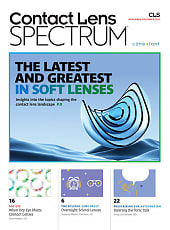
Prevent Blindness has designated Nov. 10-16 as the sixth annual Thyroid Eye Disease (TED) Week. The initiative highlights new and existing educational tools that eyecare professionals can share with patients affected by or at risk for TED.
TED, which can occur independently or in connection with Graves’ disease, is characterized by inflammation of the tissues around the eyes. Symptoms may include ocular pain, irritation, redness, diplopia, and proptosis. In severe cases, compression of the optic nerve can result in vision loss. The condition is also associated with psychosocial impacts, including anxiety, depression, and reduced quality of life. Risk factors include a history of Graves’ disease, smoking, low selenium or vitamin D levels, and prior radioactive iodine therapy. Middle-aged adults and women are more commonly affected, though the disease can occur at any age.
Prevent Blindness has released a suite of updated patient education materials designed to help clinicians support individuals with TED, including fact sheets and social media graphics, available in English and Spanish; a dedicated webpage; and the Prevent Blindness Living Well with Low Vision resource, designed to raise awareness about vision loss and mental wellness.
As part of World Sight Day, Prevent Blindness and the Vision Health Advocacy Coalition hosted the “Thyroid Eye Disease: Can I Talk About My Eyes?” webinar, featuring endocrinologist Sonalika Khachikian, MD, and TED patient Ronda Lynch. There is also a YouTube playlist of Focus on Eye Health Expert Series episodes featuring TED specialists.
Prevent Blindness is also supporting Connected, the first global virtual conference created by and for people affected by TED. The event convenes patients, clinicians, and advocacy groups for a week of education and community engagement at no cost during TED Week.
“Thyroid eye disease brings unique challenges, including potential vision loss and changes to a patient’s physical appearance,” says Jeff Todd, president and CEO of Prevent Blindness. “Through early diagnosis and treatment, the negative impact of TED on sight and emotional well-being can be significantly lessened.”



